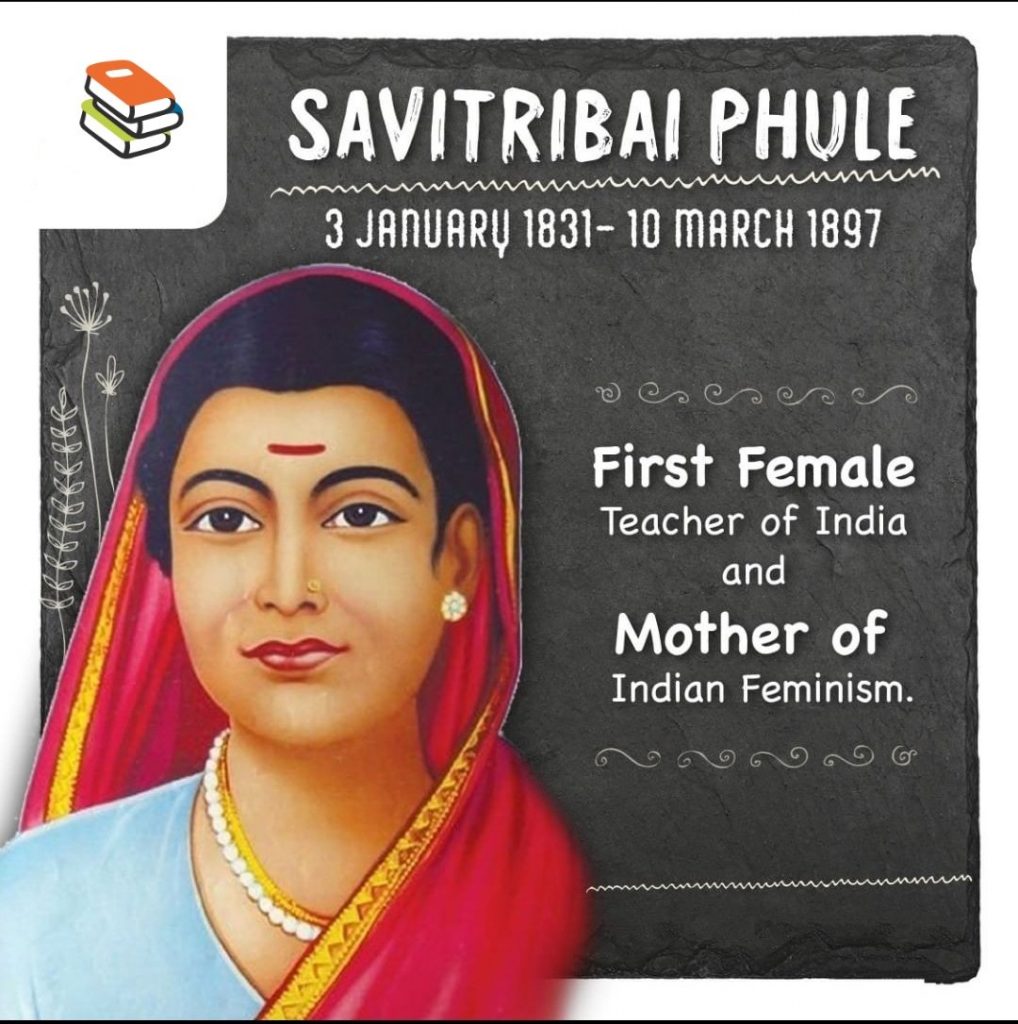


The Telangana government has declared January 3 as "Women Teacher's Day" in honor of social reformer and teacher Savitribai Phule. This decision, which was announced by state Chief Secretary Santhi Kumari, aims to commemorate the contributions of Savitribai Phule to women's education. State Women and Child Welfare Minister D Anasuya Seethakka expressed her gratitude to Chief Minister A Revanth Reddy for this decision. Meanwhile, BRS president K Chandrasekhar Rao praised the Phule couple's efforts towards empowering women and the welfare of underprivileged sections.
Savitribai Phule: A Pioneer in Women's Education and Social Reform
Savitribai Phule, born on January 3, 1831, was an Indian social reformer, philanthropist, and educator who played a pivotal role in the advancement of women's rights and education in India.
Early Life and Activism:
Born into a wealthy Brahmin family in Maharashtra, Savitribai faced opposition from her family and society for her desire to pursue education. However, with the support of her husband, Jyotirao Phule, she established the first girls' school in India in 1848 in Bhide Wada, Pune.
Savitribai's activism extended beyond education. She fought against the practice of child marriage and campaigned for widow remarriage. She also established an orphanage for children who had lost their parents to cholera.
Contributions to Women's Education:
Savitribai's unwavering dedication to girls' education earned her the title of "Mother of Indian Feminism." She established 18 schools for girls in Maharashtra, providing a much-needed opportunity for female students to access education.
Her schools not only imparted literacy but also taught practical skills such as arithmetic and hygiene. Savitribai also encouraged her students to question social norms and fight for their rights.
Legacy and Recognition:
Savitribai Phule's legacy continues to inspire generations. Her contributions to women's education and social reform have been acknowledged through various initiatives, including:
Top 5 FAQs and Answers:
1. When was Savitribai Phule born? A: January 3, 1831
2. What was Savitribai Phule's most significant contribution? A: Establishing the first girls' school in India in 1848
3. Why is January 3 celebrated as "Women Teacher's Day"? A: To commemorate Savitribai Phule's contributions to women's education
4. What other social reforms did Savitribai Phule advocate for? A: Banning child marriage and promoting widow remarriage
5. How is Savitribai Phule's legacy honored today? A: Through various initiatives, including a national holiday, a commemorative day for women teachers, and her image on currency notes

Diwali, the festival of lights, is a celebration of good over evil and light over darkness. This festival is rooted in a rich history of mythological connections, with Hindus commemorating Lord Rama and his victory over the demon king Ravana. However, Diwali is not limited to just one faith - it is celebrated across beliefs and traditions, including Jains, Sikhs, and Newar Buddhists. Festivities and celebrations during this time include illuminations, rituals, feasting, and community gatherings, making it a time of joy, renewal, and gratitude.

Maharashtra Chief Minister Devendra Fadnavis honors the brave officers who sacrificed their lives in an ambush laid by Chinese troops in Ladakh. He pays respects at the martyrs' memorial on Police Commemoration Day, highlighting their inspiration for courage and integrity. The event is observed annually to remember the 10 valiant policemen who lost their lives in the line of duty.

Prime Minister Narendra Modi marked Diwali by joining the armed forces aboard INS Vikrant, India’s indigenous aircraft carrier. A cultural programme on the vessel, showcasing the creative talents of naval personnel, left a lasting impression on the PM. He took to Twitter to express his admiration for the emotional and artistic depth within the armed forces, highlighting the symbolic power of Diwali – light triumphing over darkness – as a reflection of India’s growing strength.

On the sacred occasion of Diwali and the Hindu New Year, His Holiness Mahant Swami Maharaj extended blessings to BAPS followers worldwide. In a handwritten letter, he encouraged individuals to celebrate a Diwali that glows within the soul and radiates throughout society, with lamps of service, humility, and righteousness. He prayed for universal well-being in the New Year and reminded devotees to ignite the flame of virtue in their homes, not just through lighting lamps but also through acts of love, compassion, and service.

This upcoming Diwali in 2025, Indians and Hindu communities around the world will be celebrating amidst a digital revolution. With virtual parties, online shopping, and eco-friendly decorations, technology is transforming the age-old festival into a modern extravaganza. Social media influencers have played a crucial role in promoting the digital celebration, along with the rising environmental consciousness reflected in the use of biodegradable diyas and organic rangoli colours. This 'digital Diwali' not only brings a new level of convenience but also promotes creativity and sustainability.

In 2025, Hindus will be able to celebrate both Narak Chaturdashi and Diwali together on the same day. This coincidence marks a rare event, with the two festivals usually being observed a day apart. Narak Chaturdashi holds special significance in the five-day Diwali festival, and this year, it will be celebrated on Monday, October 20. Hindus believe that lighting the Yam Deep diya during this festival will bring protection from untimely death and negativity.

An explosion at an open cast coal mine in Chhattisgarh's Manendragarh has left at least three workers injured, including two women. According to initial reports, the explosion occurred while workers were preparing for a routine blasting operation. A probe has been launched to determine the cause of the incident, as authorities work to ensure safety measures are in place to prevent future mishaps.

As India celebrates Diwali today, devotees are preparing to perform the auspicious Lakshmi Puja to seek the blessings of the goddess of wealth and prosperity. The most auspicious timings for the puja have been revealed, falling between 7:25 pm and 8:31 pm. This article provides a city-wise breakdown of the muhurat and also highlights other important details for performing the puja on this special day.

Narak Chaturdashi, also known as Chhoti Diwali, is more than just a fancy decoration ritual. It holds deep significance in Hindu beliefs, honoring Lord Yama and seeking protection from negative energies in the coming year. The arrangement and number of diyas have symbolic meanings and a specific auspicious time for lighting them on this particular day. The act of lighting diyas on Narak Chaturdashi is a powerful chain of emotions that brings forth resilience, wisdom, and inner strength, leading to harmony and auspiciousness in the household.

On the occasion of Deepotsav, Ayodhya made history by setting two new Guinness World Records - lighting over 26 lakh diyas and hosting the largest-ever Saryu aarti. The event was organized by the Uttar Pradesh Tourism Department and the Ayodhya District Administration, with the participation of over 30,000 volunteers. The Guinness World Records officials commended the efforts and stated that it was an honor to witness such a grand and spectacular display. The city of Ayodhya also celebrated Diwali with a drone show and a Ram Leela performance, making the event even more special.